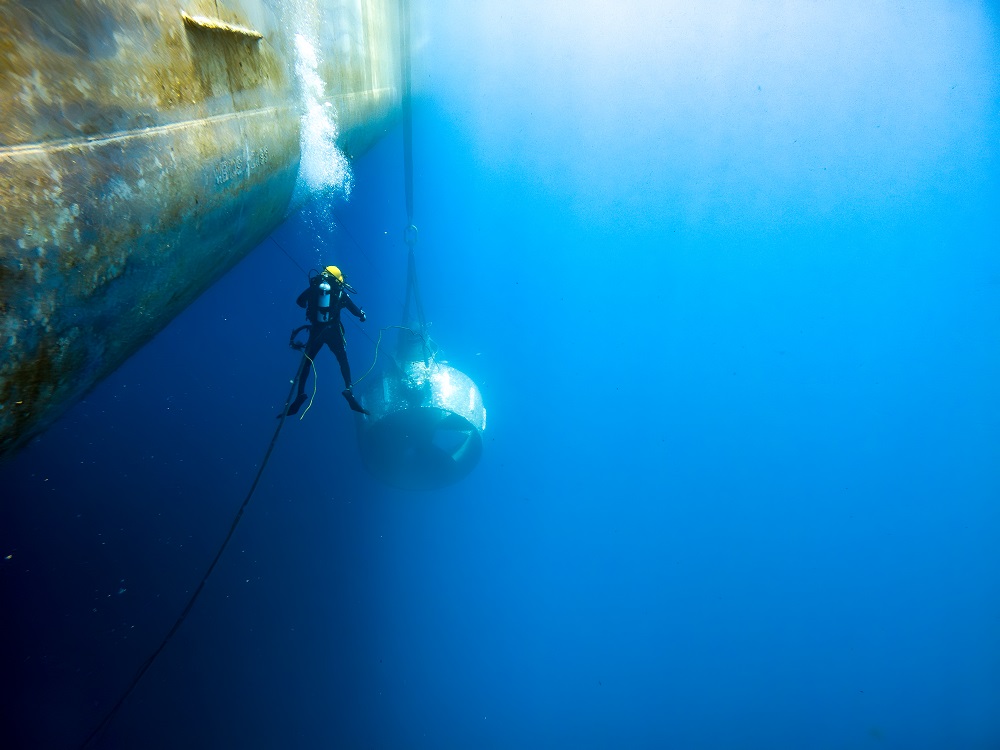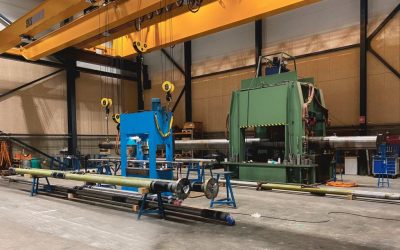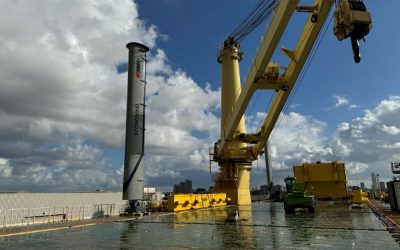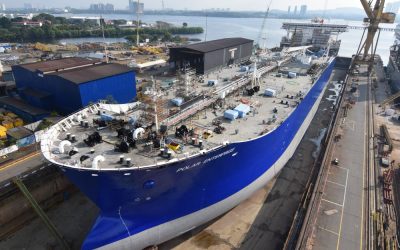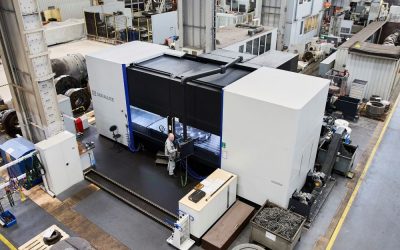Commercial diving company’s ongoing focus on training and skills development has enabled it to execute several notable, and highly challenging projects in recent months
Over the past few years, Subsea Global Solutions (SGS) has seen a steady growth in enquiries and 2023 continued that trend with a healthy mix of underwater maintenance and repair projects. Rick Shilling, executive vice president, technical services, says: “At SGS we continually invest in training that encourages our technicians to ‘think in the water’ for solutions to complex repairs. This mindset and culture, combined with the skillsets of our diver technicians, allows complex projects to be completed to the full satisfaction of our client base.”
Several recent notable projects highlight this commitment. In one, an offshore vessel with dynamic positioning (DP3) capability required an exchange of its large demountable azimuth thrusters. This included the removal of all the thrusters, their overhaul and final refitting.
Tim Duncan, commercial director – offshore markets, notes: “We perform this type of work regularly for a wide range of clients, but what made this project especially noteworthy was the pioneering of a process to enable the dry replacement of the thruster steering seals which is normally only possible in drydock. This meant we were able to provide a turnkey solution for the whole propulsion system for the new owner taking over the vessel, providing them peace of mind and improved efficiency in accordance with OEM specifications.”
SGS also delivers what it described as a “F1 pitstop like service” for vessels on tight schedules and which is planned with owners in advance. In this approach overhauled and reconditioned thrusters are prepared prior to a vessel’s arrival and exchanged one-by one, or in pairs, depending on the system layout. The newly demounted thrusters arrive at an SGS facility for overhaul for the next matched vessel. By working this way with manufacturers and class, SGS typically exchanges six DP3 units on drill ships in less than two weeks at specific sheltered anchorages.
In another notable project, a commercial shipowner reached out for help for a vessel that had incurred substantial grounding damage. This included a heavily damaged propeller, partial loss of the rudder horn, rudder damage and a bent main tail shaft. The lack of availability of a local drydock and the cost of towing to a drydock in a suitable location made drydocking the vessel impossible. Shilling says: “Based on our extensive experience doing these types of repairs, we submitted our proposal, applying our ‘thinking in the water’ mantra to the problem at hand. Then our technical services team, together with our in-house project managers, prepared a detailed plan, which was accepted by all the relevant stakeholders, including the vessel owner, class, manufacturers, and insurers.”
A special customised cofferdam, to encase the area surrounding the damaged rudder horn and permit main shaft reinstallation, was fabricated and fitted on the vessel at the pierside layberth by SGS diver technicians. Meanwhile onshore repairs to the rudder itself were undertaken, and in the cofferdam the damaged rudder horn was repaired permanently with the installation by welding of a newly cast steel section of the rudder horn. This required SGS to qualify a new DNV weld procedure to attain class approval for the rudder horn repair section installation. Thereafter the cofferdam was removed, manufacturer-approved reinstallation of the rudder was then completed, and new blades fitted, prior to final checks and testing.
One of the trends that is most influencing the underwater ship services market is climate change and the global drive to achieve net zero. Shilling says: “The addition of the EU Emissions Trading System (ETS) and focus on CII/EEXI has sharpened ship operators’ attention on the services we offer and that has triggered a proliferation of new agents offering the underwater services of commercial diving companies. This means that it’s not uncommon to receive multiple source enquiries for the same job! We invested years ago in an effective system to process and coordinate enquiries across our offices, now on five continents, and this operational structure has recently shown its advantages, as the market adjusts to its new normal.”
There has also been a greater market-wide focus on biofouling solutions, with ETS adding another motivator to the mix. As Shilling points out: “Underwater technology and investment interest continues to grow in providing solutions and there is much learning underway across the industry. An array of ROV hull cleaning products is appearing, many promising great things, but not always delivering.”
He continues: “As a full-service underwater solutions provider, we are also engaging in ROV technology that complements our diver technicians, and the hull cleaning Ecofriendly Cleaning ROV (ECO-CROV) from SGS is busy gaining local port authority approvals and seeing multiple deployments, as is our Portable CROV system, which can be flown into the destination required, literally in a suitcase.”
In the cruise sector, New Zealand’s Ministry of Primary Industries (MPI) arguably leads the world in biofouling inspection protocols, which is a very high bar to pass, and SGS is especially proud of its team’s achievements in checking, cleaning and getting approved every cruise ship enrolled in its underwater fleet management service program. This is especially notable as it encompasses more than 70% of the cruise fleet visiting New Zealand.
SGS has a skilled technician base of over 200 divers and ROV operators that are full time employed in 14 hub locations across five continents, supported by numerous working partnerships worldwide. Shilling concludes: “As an organisation, 2023 did not see any new locations added to our owned office network. However, with thousands of projects completed in over 250 ports worldwide in 2023, we have a wide trusted partner network that we wish to thank for their continued support and cooperation.”
